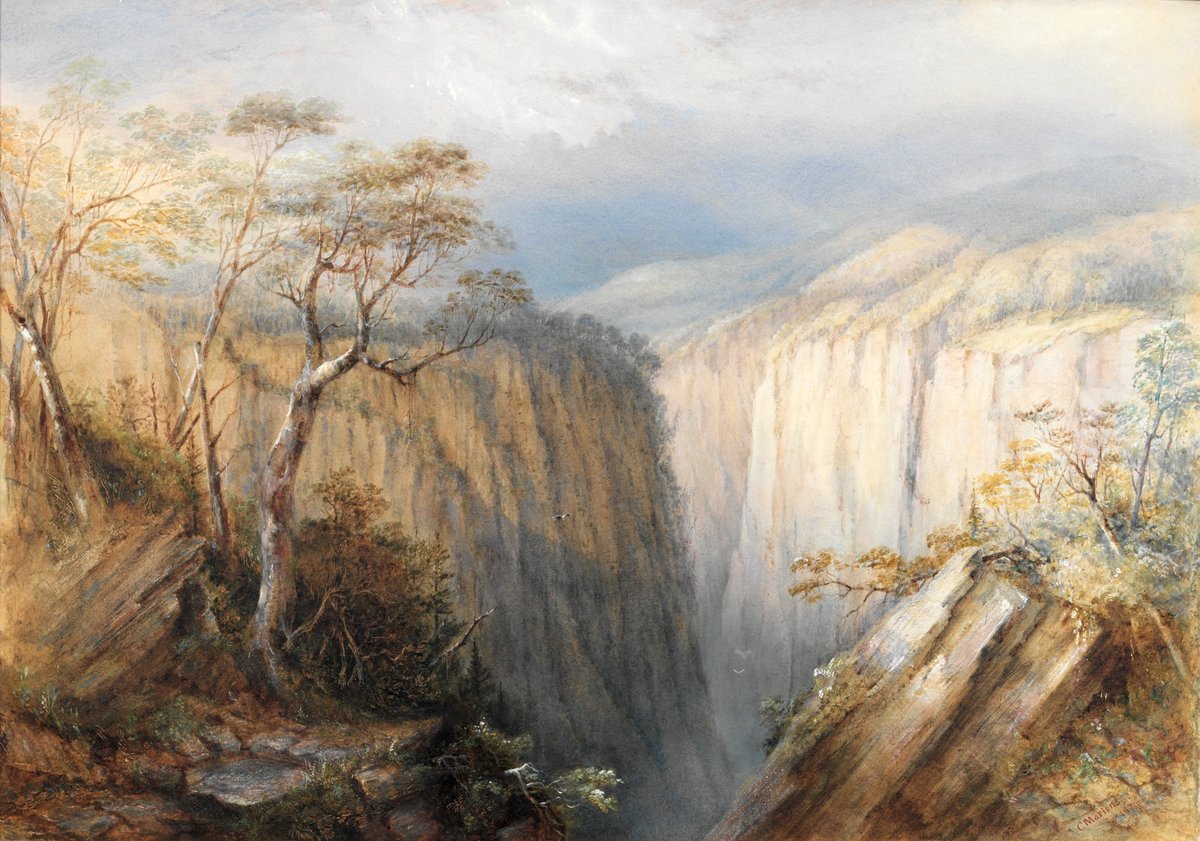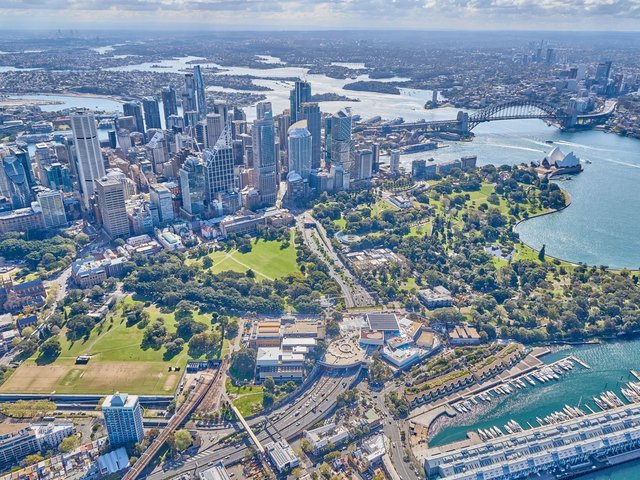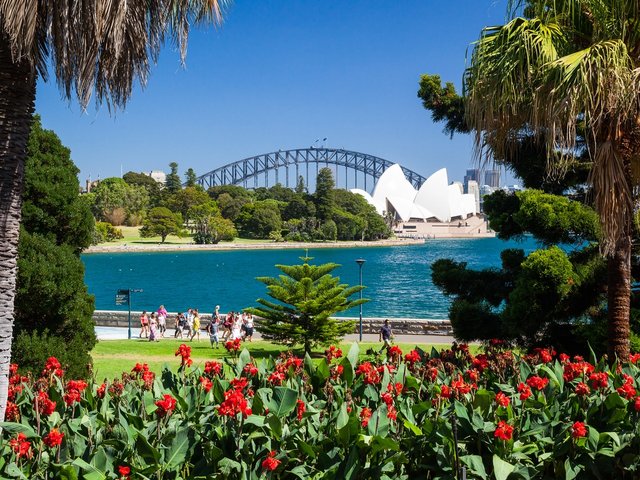1871—Founding the Art Gallery of New South Wales
The Art Gallery of New South Wales was founded in 1871 “as a museum of contemporary art”, according to Steven Miller, the head of the gallery’s National Art Archive and Research Library. In 1874, when the gallery purchased its first work, it did so under its primary stated aim of supporting living Australian artists. That first purchase was a watercolour titled Apsley Falls (1874) by Conrad Martens (pictured above), the colony’s most senior living artist, who was ill at the time and struggling financially. Supporting artists was foremost in the minds of the gallery’s founders, who organised annual shows to help artists find buyers for their work. “They didn’t intend to collect artworks. That came later,” Miller says. In the 1930s and 40s, the gallery continued to support living Australian artists by pioneering a series of multi-lender solo exhibitions. The first such exhibition was devoted to the Australian Impressionist Arthur Streeton, in 1931. Subsequent solo exhibitions focused on other prominent artists such as Hans Heysen, Roland Wakelin, William Dobell, Margaret Preston and Lloyd Rees.
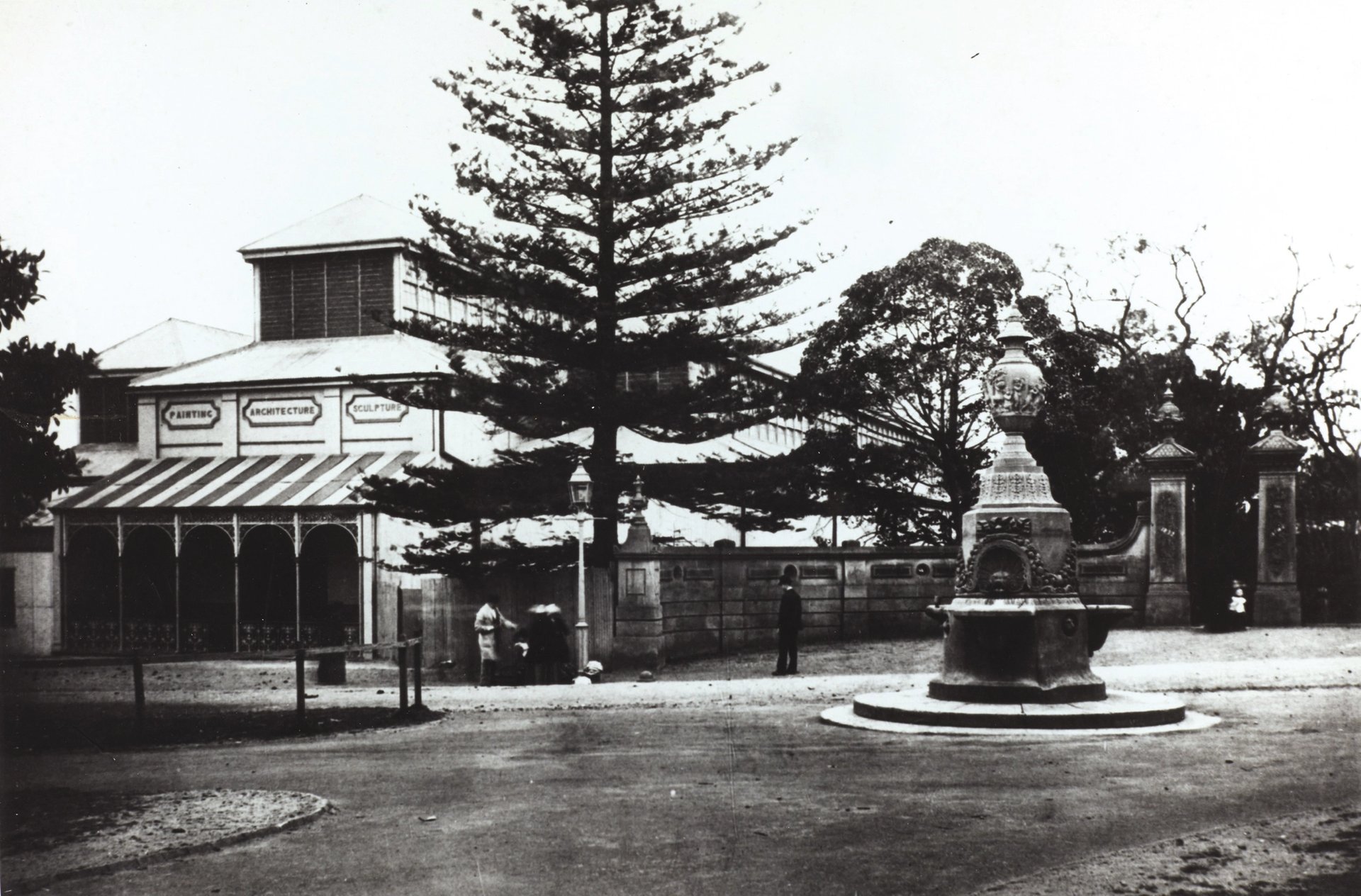
Exterior view of the now demolished original Art Gallery of New South Wales in the Botanic Gardens, circa 1881. Photo: AGNSW
1880—The gallery’s first home
The Art Gallery of New South Wales’s first home was built in 1879 and stood across the road from the site of Sydney Modern. It was built as the Fine Arts Annexe of that year’s Sydney International Exhibition and was the first freestanding public art gallery in Australia. “Even though the National Gallery of Victoria was founded ten years before us, it shared premises and administration with the public library and museum as was the custom in all Australian states apart from New South Wales,” says Steven Miller. On 22 September 1880, after the Sydney International Exhibition had closed, the Fine Arts Annexe was officially dedicated as the Art Gallery of New South Wales. In pride of place in the first exhibition was Ford Madox Brown’s painting Chaucer at the Court of Edward III (1847-51).

Crowds arriving at the National Art Gallery of New South Wales to see Light of the World by William Holman Hunt Photo: © Art Gallery of New South Wales
1906—Sandstone splendour
Between 1896 and 1909 the gallery’s historic sandstone home was built on a hill overlooking Sydney Harbour. The site was opposite and just metres south of the original gallery building in the Royal Botanic Garden. This 1906 photograph shows record crowds coming to see Holman Hunt’s painting The Light of the World. The institution’s early name, the National Art Gallery, can be seen on the front. Walter Liberty Vernon designed the sandstone building, and Miller believes it will harmonise perfectly with the new building. “Modernism always sits beautifully with Classicism, because it emphasises form and structure and geometry,” he says.
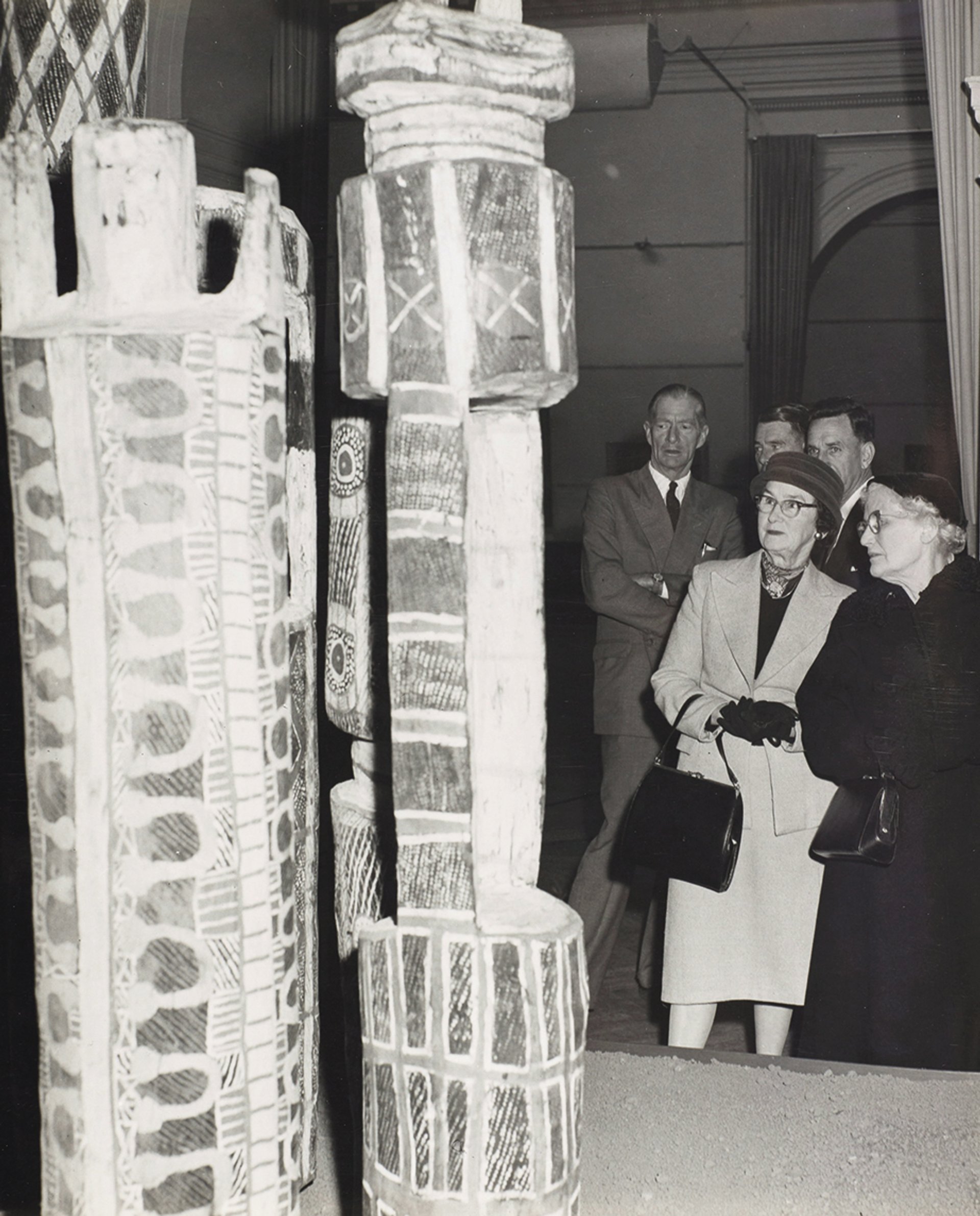
Guests at the ceremony to mark the installation of the Tutini (Pukumani grave posts) at the Art Gallery of New South Wales, 18 June 1959 Photo: AGNSW; © Estate of Max Dupain/Copyright Agency
1959—Awakening to Indigenous art
In 1959 a group of recently commissioned Pukumani grave posts went on view in the historic Grand Courts of the gallery. The placement of the Indigenous works in the context of the Old Masters made a powerful statement about their status as art and not an “ethnographic curiosity”. The posts were created in 1958 by Melville Island artists Laurie Nelson Mungatopi, Bob Apuatimi, Jack Yarunga, Don Burakmadjua and Charlie Kwangdini. They were commissioned when Tony Tuckson, the deputy director, went to Melville Island to see the artists making the work and was enthralled by the encounter. The artists themselves became passionate about the Pukumani grave posts commission, seeing in the project an important chance to heighten a wider understanding of their culture. “One of the descendants of the artists said what they wanted is the outside world ‘to be cultured’,” Miller says. In 1994 the gallery opened Yiribana, the world’s largest single space devoted to the permanent exhibition of Aboriginal and Torres Strait Islander art and culture.

Installation view of the Grand Courts at the Art Gallery of New South Wales, featuring Pascale Marthine Tayou's Colonnes Pascale 2012 Photo: © Art Gallery of New South Wales, Jenni Carter
2021—Celebrating 150 years
In 2021 the gallery celebrated the 150th anniversary of its foundation. Refurbishments to the original sandstone building commenced, including the reinstallation of the collection in the historic Grand Courts and 20th-century galleries, as well as the relocation of the Research Library and National Art Archive. “It’s a key moment when the gallery transformed itself to be a museum for 21st-century audiences and art,” Miller says. Major building projects had taken place in 1972 and 1988, together doubling the gallery’s size. Sydney Modern almost doubles the gallery’s space again. But it takes a major step further, offering a separate building whose connection to the historic sandstone edifice is via a large landscaped “public art garden”.
• Read all of our articles on the Sydney Modern Project here


